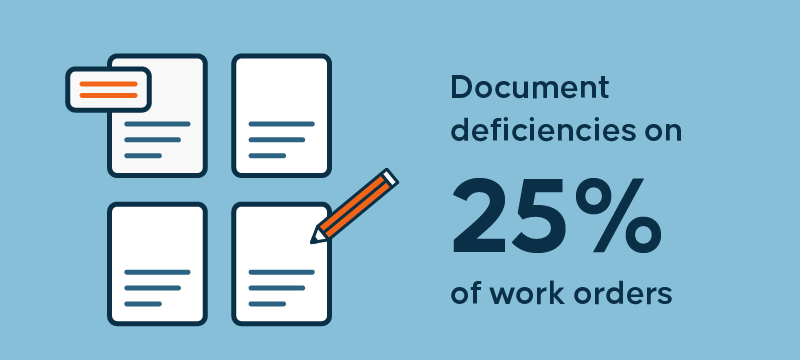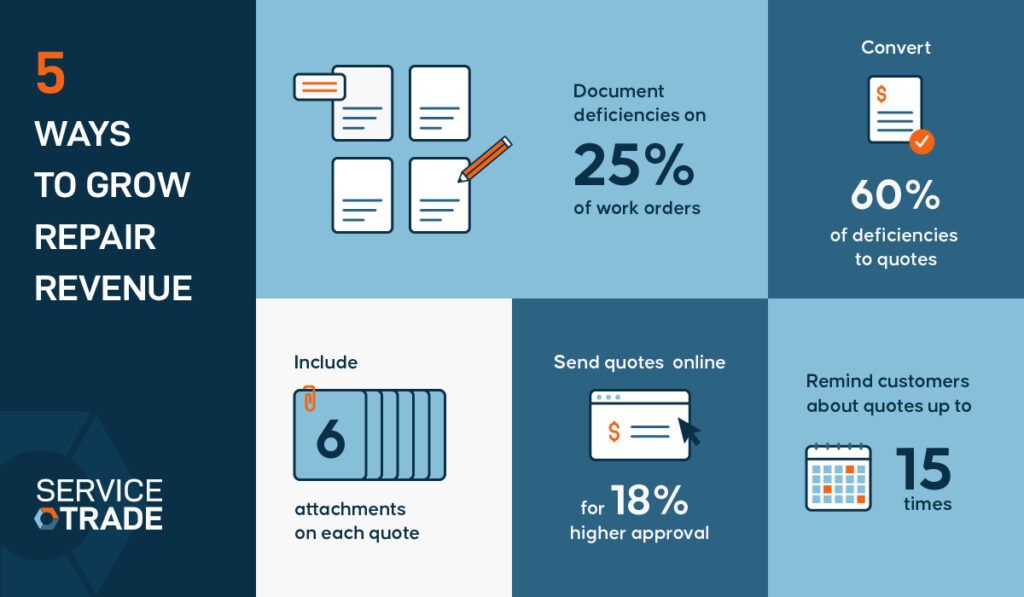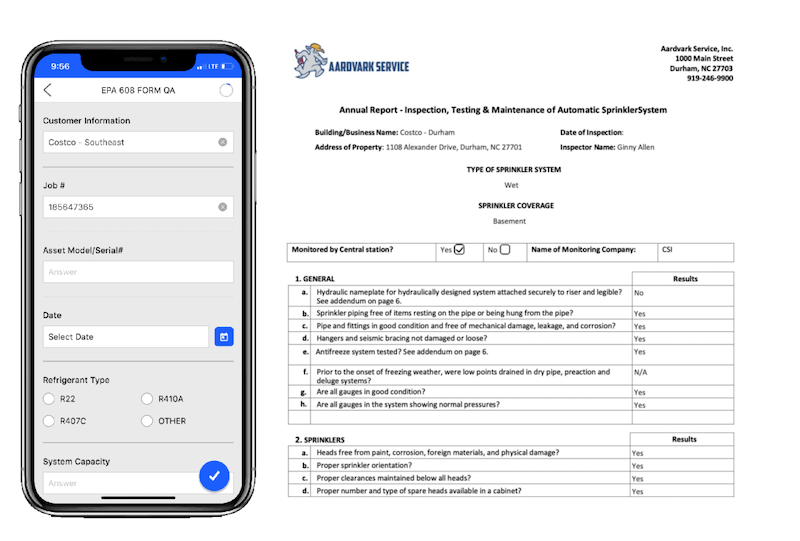Why You Should Report More Deficiencies (And How To Do It)
Failing to properly identify and report deficiencies can lead to devastating consequences, risking lives and property. It also limits your revenue growth potential by overlooking issues that can be converted into high-margin repair work. This article explores why documenting more deficiencies is crucial and what you’ll need to get it done.

Identifying More Deficiencies Grows Repair Revenue
Improving deficiency documentation can have a big impact on your repair revenue. Top-performing contractors in the fire and life safety industry document deficiencies in about 25% of their work orders, while their lower-performing peers do so in only 10% of cases. This difference translates into more opportunities for high-margin repair work.
When you consistently identify and document deficiencies, each recorded issue becomes a potential revenue source. A contractor who notes and reports deficiencies on 25% of their work orders opens up more opportunities for repairs, thus boosting their earnings. On the other hand, failing to document deficiencies means missed opportunities for additional work and revenue.
Better Deficiency Documentation Mitigates Risk
Thorough documentation of deficiencies is essential for mitigating risk. Undocumented issues can lead to significant liability if a problem arises from an unreported deficiency. For example, if a critical fire safety issue covered by the scope of your service contract with the customer is not documented and subsequently does not work properly during a fire, your business could face serious legal and financial repercussions.
By ensuring that deficiencies are consistently identified and recorded, you create a comprehensive paper trail that serves as evidence of your diligence. This documentation can protect your business from claims while demonstrating to clients that you are committed to their safety and compliance.
What You’ll Need to Report More Deficiencies
To effectively report more deficiencies, equip your team with the right tools and incentives. Here’s how you can get started:
Efficient Reporting Tools: Use mobile apps or software that allows technicians to quickly and easily document deficiencies, including taking photos and videos on-site. This ensures accurate and timely recording of issues.
Motivated Technicians: Train and motivate technicians to identify and document more deficiencies for everything from code non-compliance to equipment operating out of specifications to wear and tear. Recognizing and rewarding thorough inspections can significantly improve documentation practices.
Training and Best Practices: Regularly train your technicians on the importance of reporting deficiencies and the best practices for doing so. Clear guidelines and ongoing education help maintain high standards.
Steps to Improve Deficiency Documentation
Set Clear Goals: Aim to document deficiencies in at least 25% of your work orders. Setting specific targets helps focus your team’s efforts.
Use Technology: Leverage technology to streamline the reporting process. Mobile apps with features for notes, photos, and videos can make a significant difference.
Regular Reviews: Conduct regular reviews of deficiency reports to ensure accuracy and completeness. This can also help identify any training needs or process improvements.
Feedback Loop: Establish a process where technicians receive regular input on their documentation practices. Constructive critiques help them improve and stay motivated.
Bonus Tip from NFSA Hall-of-Famer Top Myers
Document deficiencies that are not code-related on a separate observation report. This report, which falls outside the standard inspection, allows you to inform clients of additional findings outside the scope of your contract without legal issues, providing extra value and potential revenue opportunities.
–
Documenting more deficiencies is just the first step in optimizing your deficiency management workflow to earn more repair revenue and reduce your risk. Learn what else you can do: The Deficiency Efficiency Guide: 5 Steps to Higher Revenue and Safer Facilities

From the blog
Further Reading

Focusing on deficiency documentation and the resulting repair revenue is a proven way to keep your business growing, even when skilled labor restraints limit your capacity. With a smart deficiency management tool and a seamless pull-through workflow, you can drive more revenue, provide a better service to your customers, and reduce your liability risk. […]
Digital inspection forms are a powerful solution for life safety service contractors looking to streamline operations. However, at present, a majority of contractors in the fire protection business are still using paper. There’s a 60% chance that’s you! But as the world has come to rely on digitization, and more digital offerings like InspectionManager have […]
